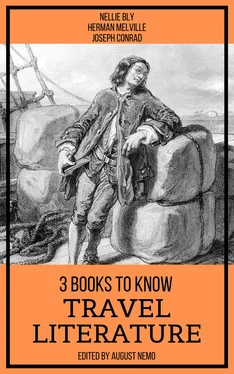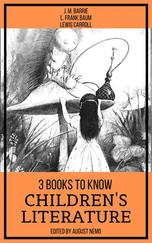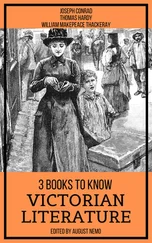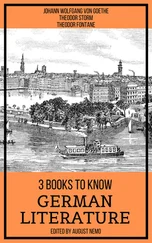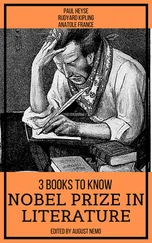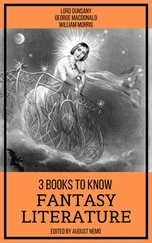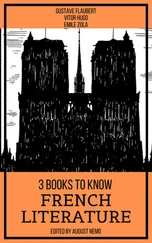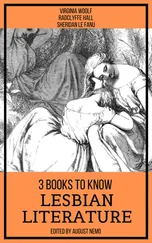“Why do you not go to Bombay as my hero Phileas Fogg did?” M. Verne asked.
“Because I am more anxious to save time than a young widow,” I answered.
“You may save a young widower before you return,” M. Verne said with a smile.
I smiled with a superior knowledge, as women, fancy free, always will at such insinuations.
I looked at the watch on my wrist and saw that my time was getting short. There was only one train that I could take from here to Calais, and if I missed it I might just as well return to New York by the way I came, for the loss of that train meant one week’s delay.
“If M. Verne would not consider it impertinent I should like to see his study before I go,” I said at last.
He said he was only too happy to show it me, and even as my request was translated Mme. Verne sprang to her feet and lighted one of the tall wax candles.
She started with the quick, springy step of a girl to lead the way. M. Verne, who walks with a slight limp, the result of a wound, followed, and we brought up the rear. We went through the conservatory to a small room up through which was a winding stair, or, more properly speaking, a spiral stair-case. Mme. Verne paused at every curve to light the gas.
Up at the top of the house and along a hall that corresponded in shape to the conservatory below, M. Verne went, Mme. Verne stopping to light the gas in the hall. He opened a door that led off the hall and I stepped inside after him.
I was astonished. I had expected, judging from the rest of the house, that M. Verne’s study would be a room of ample proportions and richly furnished. I had read so many descriptions of the studies of famous authors, and have dwelt with something akin to envy (our space is so limited and expensive in New York) on the ample room, the beautiful hand-carved desks filled with costly trinkets, the rare etchings and paintings that covered the walls, the rich hangings, and, I will confess it, I have thought it small wonder that amid such surroundings authors were able to dream fancies that brought them fame.
But when I stood in M. Verne’s study I was speechless with surprise. He opened a latticed window, the only window in the room, and Mme. Verne, hurrying in after us, lighted the gas jet that was fastened above a low mantel.
The room was very small; even my little den at home was almost as large. It was also very modest and bare. Before the window was a flat-topped desk. The usual litter that accompanies and fills the desks of most literary persons was conspicuously absent, and the waste-basket that is usually filled to overflowing with what one very often considers their most brilliant productions, in this case held but a few little scraps.
On the desk was a neat little pile of white paper, probably 8x10 in size. It was part of the manuscript of a novel that M. Verne is engaged on at present. I eagerly accepted the manuscript when he handed it to me, and when I looked at the neat penmanship, so neat in fact that had I not known it was prose I should have thought it was the work of a poet, I was more impressed than ever with the extreme tidiness of this French author. In several places he had most effectually blotted out something that he had written, but there was no interlining, which gave me the idea that M. Verne always improved his work by taking out superfluous things and never by adding.
One bottle of ink and one penholder was all that shared the desk with the manuscript. There was but one chair in the room, and it stood before the desk. The only other piece of furniture was a broad, low couch in the corner, and here in this room with these meagre surroundings, Jules Verne has written the books that have brought him everlasting fame.
I leaned over the desk and looked out of the little latticed window which he had thrown open. I could see through the dusk the spire of a cathedral in the distance, while stretching down beneath me was a park, beyond which I saw the entrance to a railway tunnel that goes under M. Verne’s house, and through which many Americans travel every year, on their way to Paris.
Leading off from the study, is an enormous library. The large room is completely lined with cases from ceiling to floor, and these glass-doored cases are packed with handsomely bound books which must be worth a fortune.
While we were examining the wealth of literature that was there before us, M. Verne got an idea. Taking up a candle and asking us to follow, he went out into the hall; stopping before a large map that hung there, holding up with one hand the candle, he pointed out to us several blue marks. Before his words were translated to me, I understood that on this map he had, with a blue pencil, traced out the course of his hero, Phileas Fogg, before he started him in fiction to travel around the world in eighty days. With a pencil he marked on the map, as we grouped about him, the places where my line of travel differed from that of Phileas Fogg.
Our steps lagged as we descended the winding stair again. It had come time to take farewell, and I felt as if I was separating from friends. Down in the room where we had been before, we found wine and biscuit on the little table, and M. Jules Verne explained that, contrary to his regular rules, he intended to take a glass of wine, that we might have the pleasure of drinking together to the success of my strange undertaking.
They clinked their glasses with wine, and wished me “God speed.”
“If you do it in seventy-nine days, I shall applaud with both hands,” Jules Verne said, and then I knew he doubted the possibility of my doing it in seventy-five, as I had promised. In compliment to me, he endeavored to speak to me in English, and did succeed in saying, as his glass tipped mine:
“Good luck, Nellie Bly.”
Mme. Verne was not going to be outdone by her gallant husband in showing kindness to me. She told Mr. Sherard that she would like to kiss me good-bye, and when he translated her kind request, he added that it was a great honor in France, for a woman to ask to kiss a stranger.
I was little used to such formalities, or familiarities, as one may deem them, but still I had not one thought of refusing such delicate attention, so I gave her my hand and inclined my head, for I am taller than she, and she kissed me gently and affectionately on either check. Then she put up her pretty face for me to kiss. I stifled a strong inclination to kiss her on the lips, they were so sweet and red, and show her how we do it in America. My mischievousness often plays havoc with my dignity, but for once I was able to restrain myself, and kissed her softly after her own fashion.
With uncovered heads, and despite our protestations, they followed us out into the cold court-yard, and as far as I could see I saw them standing at the gate waving farewell to me, the brisk winds tossing their white hair.
On to Brindisi.
––––––––

WHEN M. and Mme. Verne were no longer visible, my thoughts turned to my trip. I feared that the enjoyment of my visit to their home had jeopardized the success of my tour.
The driver had been told to make the best speed back to the station, but the carriage seemed to be rolling along so quietly that I could not rest until it was urged again upon the coachman to reach the station in the shortest possible time.
Some few moments after we reached there the train came in. Bidding a hearty good-bye to Mr. Sherard, I started again on my tour of the world, and the visit to Jules Verne was a thing of the past. I had gone without sleep and rest; I had traveled many miles out of my way for the privilege of meeting M. and Mme. Verne, and I felt that if I had gone around the world for that pleasure, I should not have considered the price too high.
Читать дальше
